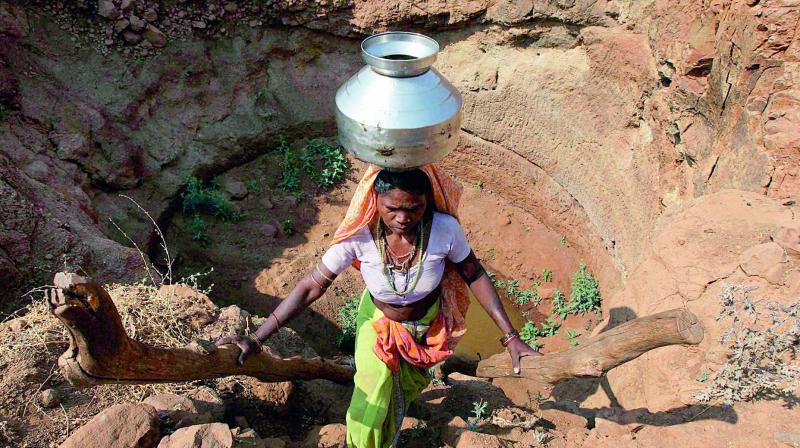
Jal Shakti stares at depleting groundwater, lack of infrastructure

A day after taking an oath as the Prime Minister of India, Narendra Modi formed a new ministry for water — Jal Shakti.
Experts welcomed this move since water was being dealt by multiple departments and ministers, and integrating it under one roof may speed up processes. But, the challenges now seem bigger: Groundwater depletion, lack of proper infrastructure, lack of clarity on river linking and so on.
The ministry, which will focus on ensuring clean water for people and irrigation facilities for farmers, is allocated to Gajendra Singh Shekhawat. He was the Minister of State for Agriculture and Farmers Welfare in Rajasthan. In the recently concluded Lok Sabha polls, Shekhawat defeated Vaibhav Gehlot, son of Rajasthan chief minister Ashok Gehlot.
What are the challenges?
One of the key challenges would be coming up with a long-term solution by creating sustainable water resources, water activist K Sarvanan told The Federal.
The groundwater is being used to provide drinking water to people in urban areas, but the government has not been paying heed to depleting groundwater level, Sarvanan added.
Depleting groundwater resources
“Groundwater, which truly powered the Green Revolution, faces a crisis of sustainability,” Mihir Shah Committee said in a report. The Committee in 2016 had recommended constituting National Water Commission — a multidisciplinary organisation that will look into water management more holistically.
Groundwater in many parts of the country is over exploited, S Janakarajan, (retd) professor at Madras Institute of Development Studies (MIDS) and water expert, told The Federal. “Groundwater is now getting heavily contaminated due to industrial effluent and seawater intrusion. This should be stopped forthwith,” he said.
Janakarajan added that groundwater depletion and desertification can be prevented only by regulating groundwater extraction and adequate recharge measures.
Ensuring water for irrigation
Stating that big projects such as linking of rivers may fail to benefit common people, Sarvanan said that another challenge would be to ensure water for irrigation to farmers. In India, over 60 per cent of the economy continues to rely on agriculture and lack of irrigation facilities is one of the key problems faced in this sector.
Himanshu Thakkar, coordinator of South Asia Network on Dams, Rivers and People, pointed out in his blog that the Net Area irrigation by Major and Medium Irrigation Projects has been declining over the years. According to Union Ministry of Agriculture data, the Net Area irrigation at all-India level had reached a peak of 17.7 million ha in 1990-91. It never again achieved that peak again in over 25 years.
Infrastructure for drinking water
Apart from figuring out a long-term plan to supply water for drinking and irrigation, the ministry may have to work towards ramping up the creation of basic end-to-end infrastructure to provide safe drinking water, Jeyannathann Karunanithi, a researcher based in Chennai, told The Federal.
Also read: Why BJP’s promise of piped water may remain a pipe dream
The NITI Aayog, in a report, stated that nearly 600 million Indians face “high to extreme water stress”, while 75 per cent households do not have drinking water on their premises. At the same time, about 2 lakh people die every year due to inadequate access to safe water.
According to data provided by the Ministry of Drinking Water and Sanitation in the Lok Sabha (dated February 7, 2019), about 20.5 per cent of rural population gets less than 40 litres per capita per day (lpcd) of safe drinking water. The number of people in rural areas having limited or no access to safe drinking water would be more if India’s revised target of 50 lpcd in rural areas is considered.
Clear vision for river-linking projects
The setting up of a special committee to look at water crisis has again brought back to life the Vajpayee-era dream of inter-linking of India’s rivers. However, the inter-linking of rivers is an ‘uphill task’.
“Until now, the river-linking projects have been used a slogans. For it to happen, one needs a clear blueprint of how these rivers can be linked, including a clarity on the ecological consequences in addition to long term sustainability of these projects,” Jeyannathann said.
Experts say there are additional issues that the ministry will have to look at, such as prevention of encroachment of river bodies, sand mining, protecting small water bodies including tanks and ponds.


